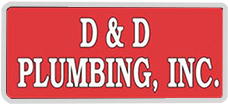Northern Nevada Radiant Heating Experts
Radiant Heating Can Save You Thousands of Dollars in Heating Costs
In the early 1980s, D&D Plumbing
expanded their plumbing business to include hydronic heating and snow melt systems. D&D
has been in the heating business for over 40 years and has installed and worked on thousands of hydronic heating and snow melt systems. D&D
is also a member of the Radiant Panel Association and utilizes the standards set forth by the association. In addition, D&D
keeps up with the latest trends and technologies by attending classes and seminars. As a result of their experience and continuing education efforts, D&D
has the know-how to design and build effective hydronic heating and snow melt systems that are pocketbook-friendly yet built to last.
What is radiant heat?
Radiant heat is the transfer of energy from a warm surface to a cooler system using radiant energy rather than conduction or convection. Radiant energy travels through space without heating the space itself. An example of radiant energy is when you place your hand next to (but not touching) a hot surface and you can feel the heat. Radiant heating systems are implemented in buildings by creating a radiant panel using PEX tubing and hot water circulated through the tubing.
Why is radiant heat more comfortable than forced air?
Buildings heated with radiant heat are more comfortable than forced air because: 1) With radiant floor systems, the heat is concentrated at the floor level where it needs to be. With a forced-air system, the heat rises to the ceiling. 2) Forced air systems are drafty and the air blowing across the body can be uncomfortable. Radiant systems are quiet and rely on radiant energy to transfer energy to the occupants. 3) With radiant systems, a building is typically broken down into a number of zones. Each zone has its own thermostat and has the capability to be operated at a different temperature than the other zones. Forced air systems are typically one-zone systems, and it is hard to attain desirable temperatures in each area of the building.
Is radiant heat more efficient than forced air?
This is an ongoing topic of debate, and there have not been any clear-cut studies that have resolved this issue. Many tubing manufacturers claim that radiant can save up to 40 percent in energy costs. The Department of Energy advocates that radiant is 20 percent more efficient than forced air. Whether or not these values are true, radiant has several efficiency savers in its favor: 1) With radiant heat installed in the floor, the heat is concentrated at the floor, and this should cut down on the heat loss through the ceiling. 2) In a radiant system with multiple zones, an area or room that isn’t used much can be set back to a lower temperature to save money.
What is the cost of a radiant heating system?
The cost of a radiant heating system is largely dependent upon three major factors: 1) The size and complexity of the building; 2) the complexity of the system; and 3) the type and brands of equipment used. Please contact us to obtain an accurate bid.
Is baseboard heat less expensive than radiant heat? Yes, most of the time. In smaller buildings, baseboard systems can save the owner as much as $1/square foot. In larger buildings, baseboard systems can actually become so complex that they can cost more money to install (this is mainly due to the increased labor costs from running copper piping to and from all of the baseboards).
Can the owner purchase the materials from D&D and do the installation themselves to help save money? Yes. In addition to supplying the major equipment, D&D will also provide installation information, heat loss calculations and shop drawings for the installation of all the equipment. D&D
does this, realizing that at some point the owner will most likely need help and ask D&D
to complete a portion of the work.
Contact us today
to get a free detailed estimate on your radiant heating project.
For recent examples of our radiant heating projects, visit this page.





